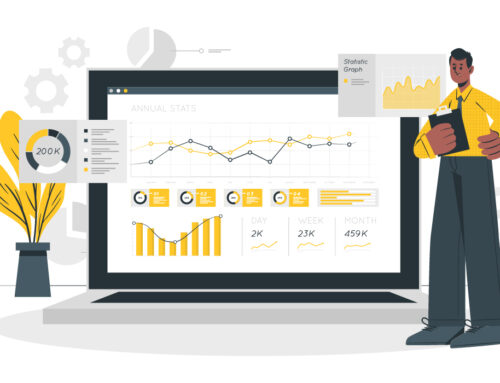What if your pricing strategy could drive transformation across your entire organisation?
Author Nick Saraev

Photo: Freepik
For Roberto Bedotto at Dormakaba, this question is the heart of a bold journey towards becoming a value-first enterprise. Speaking at the ‘Manufacturing Pricing Excellence 2025 – Power of 50’ event, he shared practical insights into how pricing can evolve from a transactional task to a strategic force within the business.
Introducing Dormakaba
Dormakaba operates in the access management space, offering everything from badging systems and biometric scanners to time attendance software. In short, if a device allows you to enter or exit a space such as a hotel, airport, or office building, Dormakaba may well be behind it. With roughly 3 billion Swiss francs in annual revenue and deep roots in Swiss-German engineering, the company is no stranger to complex B2B operations.
But even a company with such technical heritage must continually evolve, and value-based pricing is at the core of that evolution.
What Does It Mean to Be ‘Value-First’?
Dormakaba defines a value-first organisation as one that embeds value evaluation, creation, delivery, and monetisation into its DNA. Pricing professionals play a pivotal role at both ends of this process. They evaluate what value customers truly receive and work to monetise it fairly.
However, it’s not just about setting prices. It involves deeply understanding what customers value and how much they are willing to pay. It also means systematically helping internal teams, from product managers to sales, act on that insight.
To do this well, alignment is crucial.
Internal and External Alignment: Selling the Idea of Value
One of the main themes in Bedotto’s talk was the importance of selling value pricing internally. Pricing professionals must be strong influencers and skilled communicators.
Bringing together insights from marketing, the needs of sales, and the expectations of the customer, pricing sits at the crossroads of value creation. To build momentum, Bedotto adopted the ADKAR change management model, focusing on:
- Awareness of why pricing matters
- Desire to support change
- Knowledge of how to implement it
- Ability to do it well
- Reinforcement to sustain it over time
Such a structured approach helps identify an organisation’s pricing maturity and the next steps required for growth. Bedotto also recommends running a pricing maturity assessment at least annually to track progress and tailor strategies.
Start Small, Grow Smart
Instead of launching large-scale pricing overhauls, Dormakaba started with small pilots. Using Excel and early descriptive models, they ran a few experiments to prove the concept. As success became evident, they expanded to more pilots and built semi-automated systems using tools like Power BI, aiming for the classic 80/20 impact.
At each stage, internal stakeholders were kept informed, and value pricing wasn’t forced where there was no demand. As Bedotto put it, if the pilots are not showing results, stop and reassess.
Over time, this iterative approach developed into a robust pricing model, supported by a growing internal library of value criteria. Dormakaba’s long-term vision is a self-service model where sales teams can independently use value-based pricing tools.
Using Value Pricing to Guide Product and Sales Strategy
Dormakaba didn’t stop at pricing models. They used value pricing insights to improve decisions across the business.
For example, they created value maps that showed which product attributes customers cared about most. Product managers could then allocate resources toward features that genuinely mattered, avoiding unnecessary development work.
They also built tiered product offerings and explored alternative pricing models, including subscription and usage-based pricing, inspired by sectors like aviation.
Payback Calculators: Showing the Money
One of the most powerful tools Dormakaba developed was the payback calculator. These tools translate abstract customer value into clear financial terms, showing clients how much they could save or gain using Dormakaba’s solutions.
One example was a public-facing calculator for hotels, helping them see potential savings from upgrading to more efficient door systems.
Bedotto emphasised that value must be made tangible. If customers cannot see how value translates into financial impact, then the message isn’t being communicated effectively.
Integrating Battle Cards and AI
Dormakaba also integrated traditional sales tools with value pricing insights. Their competitor battle cards were updated to include quantified value scores, giving salespeople clearer positioning guidance.
Although still in early stages, the team has begun exploring how AI can support pricing and sales enablement. For instance, they’re testing AI tools that generate tailored sales presentations based on value insights.
Lessons from the Field
Even with a clear vision and structured roadmap, implementing value-based pricing comes with its share of challenges. Dormakaba’s journey was no exception. Roberto shared several real-world lessons learned along the way, insights that can help others avoid common pitfalls and stay the course with greater confidence.
- Adapt to context: When the COVID pandemic hit, pushing ahead with pricing projects wasn’t the right move. Now, they pause or pivot strategies when needed and explain those decisions clearly.
- Avoid vagueness: Early value presentations were too generic. Now, they tie value pricing to real, practical sales use cases.
- Break down silos: Different departments often have different goals. Bedotto tackles this by involving experienced voices across the business in joint councils to shape strategy together.
- Get the basics right: Advanced pricing strategies mean little without strong fundamentals. Dormakaba ensures foundational transactional pricing processes are solid before moving on.
Key Takeaways
To wrap up, here are the core insights that emerged from Dormakaba’s journey. These are practical reminders for any organisation looking to embed value-based pricing and drive long-term change.
- Value pricing is a long-term journey. It requires structure, persistence, and internal advocacy.
- Begin with small, focused pilots. Prove the value and then scale.
- Sales enablement is critical. If the tools don’t help sales teams, they won’t be used.
- Change management must be intentional. Influence is as important as data.
- Collaboration across departments ensures long-term success.
Becoming a value-first organisation is not about a single platform or a quick win. It’s about creating a culture that understands customer value, builds around it, and ensures it’s recognised in every deal.
And as Bedotto light-heartedly noted at the end of his keynote, delivering a pricing talk might be nerve-wracking, but the pricing function has never been more alive.






























